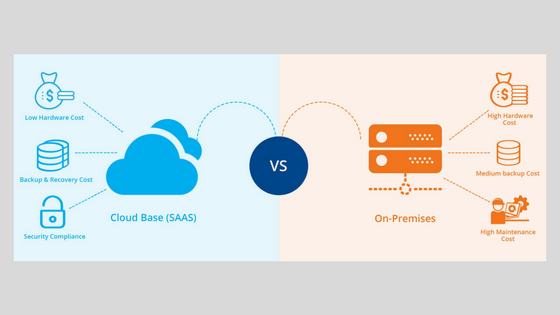The on-premise setup, widely known as an “on-prem environment” or “self-hosted environment“, allows organizations to customize their infrastructure while avoiding the costs associated with public cloud platforms.
Running applications and services in an on-premise environment offer a wide array of benefits, especially for organizations that are more heavily regulated.
Let’s have a look at how on-prem environments are advantageous, explore common use cases, and compare how Apica can help optimize your organization’s efficiency while reducing operational costs with that of Elastic.
Benefits of On-Prem over SaaS
There are a few potential advantages to using an on-prem setup over software as a service (SaaS), including the following:
Control: With on-premises software, you have more control over the hardware and infrastructure that the software runs on, as well as the ability to customize the software to meet your specific needs.
Data security: Some organizations may prefer to keep their data on-premises for security reasons, rather than relying on a third-party provider to store and protect it.
Performance: In some cases, on-premises software may offer better performance than SaaS, as the software is running on your own hardware and may be better optimized for your specific infrastructure.
Cost: Depending on the size and needs of your organization, the upfront cost of purchasing and implementing on-premises software may be less expensive than the ongoing subscription fees associated with SaaS.
Benefits of On-Prem Observability
Observability in an on-premises environment refers to the ability to monitor and understand the behavior of systems and applications within an organization’s own infrastructure, as opposed to using a cloud-based solution.
There are several benefits to implementing observability in an on-premises environment, these include:
- When implementing observability in an on-premises environment your organization gets greater control over data and infrastructure, cost savings, customization options, and potentially improved performance.
- With on-premises observability, an organization has more control over its data and infrastructure, in that it is all hosted and managed within the organization’s own environment. This is particularly important for organizations that have strict data privacy or security requirements.
- By hosting observability tools and infrastructure on-premises, an organization can potentially save on the costs associated with using cloud-based solutions, such as subscription fees and data transfer costs.
- On-premises observability solutions can be customized to meet the specific needs of an organization, whereas cloud-based solutions may have more limited customization options.
- Depending on the specific setup and infrastructure of your organization, hosting observability tools on-premises may result in improved performance and faster access to data.
ELK Stack Vs Apica
The ELK Stack (or Elastic Stack), consisting of Elasticsearch, Logstash, and Kibana, is a popular open-source solution for collecting, storing, and visualizing log data.
Logs from your application and infrastructure can be gathered with the ELK stack. The ELK stack lets you ingest data from any source in whatever format, along with searching, analyzing, and visualizing log information in real-time. However, it does have some potential shortcomings that users should be aware of:
Complex setup: Setting up and configuring the ELK Stack can be complex, especially for users who are new to the technology. It requires a good understanding of each component and how they work together, as well as knowledge of system administration and networking.
High resource requirements: Elastic on-prem is quite resource-intensive, particularly when dealing with large volumes of data. Elasticsearch, in particular, can require a significant amount of memory and CPU resources. This can be a challenge for users with limited hardware or those running on cloud environments with limited resources.
Hard to Scale: The ELK Stack is not designed to scale horizontally, meaning that it is difficult to add additional nodes to the cluster to increase capacity. This can be a problem for users with very large datasets or high traffic volumes.
Data loss: In some cases, data can be lost during the process of indexing and storing data in Elasticsearch. This can be due to a variety of factors, including network issues, hardware failures, and bugs in the software.
Apica’s on-prem benefits come to your rescue to overcome these challenges when you’re using a self-hosted environment. The following are a few potential reasons why you should choose apica.io over Elastic for your on-premise environment:
Cost: apica.io offers you a more cost-effective solution for on-premises deployments, depending on the specific needs of your organization. Not to mention that your TCO gets significantly low when compared to Elastic where the requirement for infrastructure is exorbitantly high.
Ease of use: apica.io is easier to use and requires less technical expertise to set up and manage, especially for smaller organizations with limited IT resources. Moreover, Data retention and retrieval are very easy when you’re using Apica.
Integration with other tools: Apica integrates more seamlessly with other tools and systems that the organization is using, such as its existing IT infrastructure or security protocols.
Pipeline control: With Apica you have more pipeline control into your infrastructure but better noise control as well. Moreover, you can choose your log ingestion routes and connectors. Furthermore, once the observability pipeline is implemented, XOps teams will be able to pick portions of data from specific time periods and replay them using whatever processing engine they wish. Apica’s LogFlow makes it simple to replay events and data streams with a single click.
Customization: apica.io offers more flexibility and customization options for on-premises deployments, allowing organizations to tailor the solution to their specific needs. Therefore, your engineers can be focused on your core competencies rather than worrying about and managing elastic infrastructure.
Services and Support: Elastic Security users have varied opinions about the level and quality of support they get. Apica provides round-the-clock support services without any additional costs. So you can manage end-to-end security and get role-based access with Apica.
Cost of on-premise Elastic
It is difficult to provide a specific cost for running Elastic on hardware, as the cost will depend on a variety of factors such as the hardware configuration, the size of the Elastic cluster, and the workload being run on the cluster. Some of the main factors that will affect the cost of running Elastic on hardware include-
- Hardware configuration: The cost of running Elastic on hardware will depend on the type and number of servers or other hardware devices that you use to run the cluster. This includes factors such as the number and type of CPUs, the amount of memory, and the amount of storage.
- Cluster size: The cost will also depend on the size of the cluster. Larger clusters will typically require more hardware and therefore will be more expensive to run.
- Workload: If the cluster is being used to index and search large amounts of data, it may require more resources and therefore be more expensive to run.
If you use the free version of the ELk stack, you do not have to pay for any license. However, Elasticsearch requires a lot of support and maintenance, which you will be charged for. But why pay more when you can get similar services and the same level of benefits with apica.io’s On-Prem environment at a more justified price?
Let’s take a look at the math:
In Elastic, for ingesting 100 GBs of logs in a day, you need 80 vCPUs and around 300GB RAM. With the retention time of 30 days and with the additional criteria of the hot zone and warm zone, the prices can soar overnight. You can head over to the Elastic on-prem benchmarking and sizing page to understand the pricing structure thoroughly.
With Apica, you get 100 GB of ingestion per day, with 8 vCPUs and 32 GB RAM. Moreover, there is no extra cost for the retention period (except for the storage costs). Moreover, there is no hot zone or warm zone criteria. Not to mention that you get free management service with Apica.
In a Glimpse
- The on-premise setup allows organizations to customize their infrastructure while avoiding the costs associated with public cloud platforms
- The benefits of on-prem over SaaS include more control, better data security, potentially better performance, and cost-effectiveness.
- On-prem observability provides greater control over data and infrastructure, cost savings, customization options, and potentially improved performance
- ELK Stack (Elasticsearch, Logstash, and Kibana) is a popular open-source solution for collecting, storing, and visualizing log data, but has limitations such as a complex setup, high resource requirements, and limited customization options.
- Apica is an observability platform that is designed to be more efficient, scalable, and easy to use than the ELK stack.













